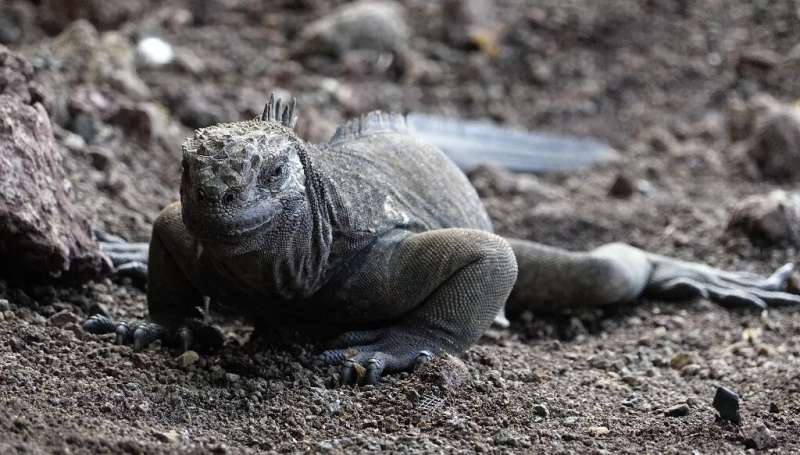A land iguana (Conolophus subcristatus) is seen on Santa Cruz Island, Galapagos Archipelago, in the Pacific Ocean, 1,000 km off the coast of Ecuador, on February 27, 2019.
A land iguana that disappeared from one of the Galapagos Islands more than a century ago is reproducing naturally after being reintroduced there, Ecuador’s environment ministry announced Monday.
The reptile of the species Conolophus subcristatus, one of three land iguanas living on the archipelago, disappeared from Santiago Island in the early 20th century according to a 1903-06 expedition by the California Academy of Sciences, the ministry said.
In 2019, the Galapagos National Park (PNG) authority reintroduced more than 3,000 iguanas from a nearby island to restore Santiago’s natural ecosystem, which lies at the center of the Pacific archipelago.
The remote island chain was made famous by British geologist and naturalist Charles Darwin’s observations of evolution there.
In 1835 Darwin recorded a large number of iguanas of all ages on Santiago.
PNG Director Danny Rueda said: “187 years later, we are once again seeing a healthy population of land iguanas with adults, juveniles and newborns.
“It’s a great conservation achievement and bolsters our hopes for recovery on the islands hard hit by introduced species.”
Located close to 1,000 kilometers (600 miles) off the coast of Ecuador, the Galapagos Islands are home to unique flora and fauna and are a natural World Heritage Site.
Experts estimate endangered Galapagos pink iguana population at 211
© 2022 AFP
Quote: Iguanas Reproducing on Galapagos Island Century After Disappearance (2022, Aug 2) retrieved Aug 2, 2022 from https://phys.org/news/2022-08-iguanas-galapagos-island-century.html
This document is copyrighted. Other than fair dealing for personal study or research, nothing may be reproduced without written permission. The content is provided for informational purposes only.

